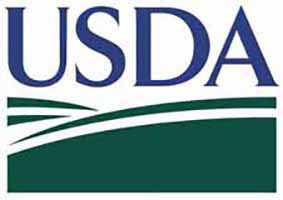 The 2014 Farm Bill authorized 2014-2018 crop year Marketing Assistance Loans (MALs) and Loan Deficiency Payments (LDPs).
The 2014 Farm Bill authorized 2014-2018 crop year Marketing Assistance Loans (MALs) and Loan Deficiency Payments (LDPs).
In New York, wheat prices are nearing a range where LDPs may be applicable, so producers should become familiar with the process to access this assistance.
MALs and LDPs provide financing and marketing assistance for wheat, as well as other commodities such as feed grains, soybeans and other oilseeds, pulse crops, rice, peanuts, cotton, wool and honey. MALs provide producers interim financing after harvest to help them meet cash flow needs without having to sell their commodities when market prices are typically at harvest-time lows.
A producer who is eligible to obtain an MAL, but agrees to forgo the loan, may obtain an LDP if such a payment is available.
To be eligible for an MAL or an LDP, producers must have a beneficial interest in the commodity, in addition to other requirements. A producer retains beneficial interest when control of and title to the commodity is maintained. For an LDP, the producer must retain beneficial interest in the commodity from the time of planting through the date the producer filed Form CCC-633EZ (page 1) in the FSA County Office. For more information, producers should contact their local FSA county office or view the LDP Fact Sheet.
USDA Offers Targeted Farm Loan Funding for Underserved Groups and Beginning Farmers
The USDA Farm Service Agency (FSA) reminds producers that FSA offers targeted farm ownership and farm operating loans to assist underserved applicants as well as beginning farmers and ranchers.
USDA defines underserved applicants as a group whose members have been subjected to racial, ethnic, or gender prejudice because of their identity as members of the group without regard to their individual qualities. For farm loan program purposes, targeted underserved groups are women, African Americans, American Indians and Alaskan Natives, Hispanics and Asians and Pacific Islanders.
Underserved or beginning farmers and ranchers who cannot obtain commercial credit from a bank can apply for either FSA direct loans or guaranteed loans. Direct loans are made to applicants by FSA. Guaranteed loans are made by lending institutions who arrange for FSA to guarantee the loan. FSA can guarantee up to 95 percent of the loss of principal and interest on a loan. The FSA guarantee allows lenders to make agricultural credit available to producers who do not meet the lender’s normal underwriting criteria.
The direct and guaranteed loan program provides for two types of loans: farm ownership loans and farm operating loans. In addition to customary farm operating and ownership loans, FSA now offers Microloans through the direct loan program. The focus of Microloans is on the financing needs of small, beginning farmer, niche and non-traditional farm operations. Microloans are available for both ownership and operating finance needs. To learn more about microloans, visit www.fsa.usda.gov/microloans.
To qualify as a beginning producer, the individual or entity must meet the eligibility requirements outlined for direct or guaranteed loans. Additionally, individuals and all entity members must have operated a farm for less than 10 years. Applicants must materially or substantially participate in the operation.
For more information on FSA’s farm loan programs and targeted underserved and beginning farmer guidelines, visit www.fsa.usda.gov/farmloans.
